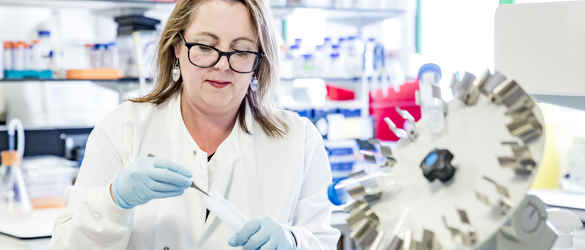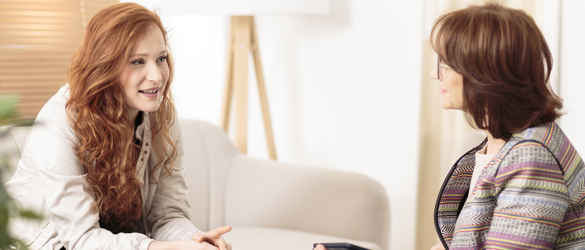Bestrophinopathies
This is a group of five related macular conditions caused by mistakes or mutations in a gene called BEST1.
So far around 300 different mistakes have been identified, causing one of five bestrophinopathies:
- Best vitelliform macular dystrophy (BVMD or “Best disease”)
- Adult vitelliform macular dystrophy (AVMD)
- Autosomal recessive bestrophinopathy (ARB)
- Autosomal dominant vitreoretinochoroidopathy (ADVIRC)
- Retinitis pigmentosa (RP).
Each of these causes a different pattern of damage to the retina, although all except ADVIRC mostly affect the macula.
BEST1 gene
In healthy people, the BEST1 gene provides instructions for making a protein called bestrophin-1. This protein is found in a thin layer of cells at the back of the eye called the retinal pigment epithelium (RPE), which supports and nourishes the retina. Bestrophin-1 acts as a funnel to allow chloride ions in and out of RPE cells, to keep them and the retina working properly.
If your copy of BEST1 has a mistake in it, the protein “funnels” it creates don’t work as they should, so the RPE cells are damaged. Without RPE support, retinal cells start to die too, causing blurring, distortion and loss of central vision.
How is it inherited?
Each bestrophinopathy is inherited in a different way – some dominantly (so that carrying even one copy of the gene from one parent is enough to develop the condition) and some recessively (so people only develop symptoms if both their parents have passed on the gene).
What are the symptoms?
In the early stages, pictures of the retina look like an egg yolk. Later they look like scrambled egg. There is also an accumulation of lipofuscin (a waste material).
Over time, the abnormal accumulation of lipofuscin can damage cells that are critical for clear central vision. As a result, people often lose their central vision, and their eyesight may become blurry or distorted. It does not affect side (peripheral) vision or the ability to see at night.
Symptoms can affect people at different ages and two people with the same bestrophinopathy may have very different levels of sight loss.
Some may never have any symptoms at all.
Treatments
There is currently no treatment for the root cause of these conditions. Treatment can only be given for new blood vessel growth, as in wet age-related macular degeneration, and this would involve anti-VEGF injections.
Head injuries may make Best disease worse. Sensible protective measures include wearing a helmet for cycling and avoiding contact sports.
Research
At the moment we can’t tell from looking at someone’s genetic code how severely they will be affected, or at what age, but research is continuing to understand more about how each different mistake causes sight loss.
A team in the USA is using gene therapy to “add in” a healthy version of BEST1 to dogs with a related condition.
Explore our research projects
Since 1987 the Macular Society has invested around £10 million in over 100 research projects.
Want to find out more?
Join our support group for working-age people with macular disease, and their families.
Last review date: 08 2021
Support for you
We provide free information and support to those with macular disease, along with their family and friends, to help people keep their independence.
Online condition-specific groups
Join an online community of people with the same type of macular disease as you, share experiences and learn something new.
Free confidential advice and support
Call our helpline on 0300 3030 111
Lines are open 9am - 5pm Monday to Friday
About the Macular Society Helpline




